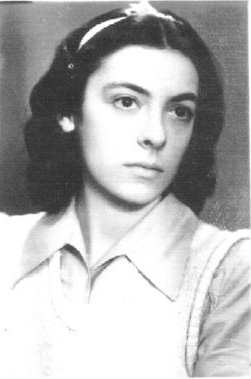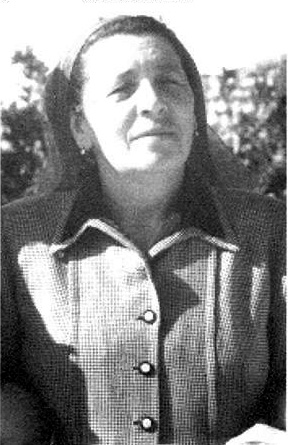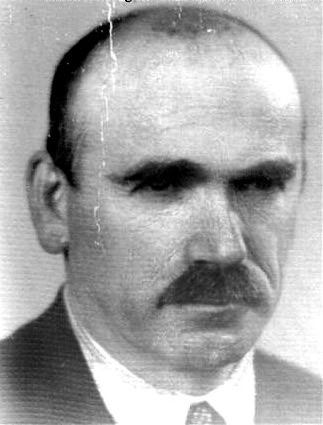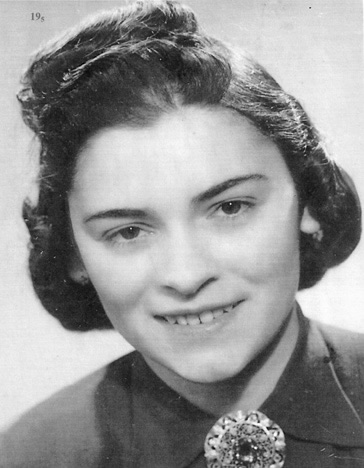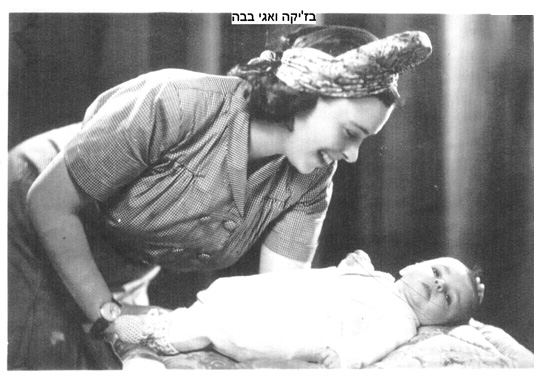| 19. Ilosvai Road | |||||
|
While the fighting was still going on in the western part of Hungary, we assembled all adult members of our Hashomer Hatzair movement who intended to stay with us and await emigration to Eretz Yisrael. We made efforts to find members with whom we had lost contact during the German occupation. As there were no functioning telephone lines or other means of communication, we had to contact them at their homes, tell them about the new Hakhshara and invite them to rejoin us.
I chanced to meet Haya on my way to the orphanage and told her about our plans. She was interested in joining and did so within a few days at the end of February 1945. Some members who had a technical background, like myself, decided that our future kibbutz should be based on manufacture in addition to “traditional” agriculture. We proposed to train everyone in locksmithing and various techniques of metal processing, and we named our Hakhshara appropriately Matekhet, meaning Metal. We acquired a workshop in the vicinity with suitable equipment and stated to train our khaverim (colleagues) in the basic operations of the craft. There was still no electric power in Budapest, so the lathe and grindstone required human power. It was rather cumbersome and caused much hilarity, but we wanted to waste no time. In the evenings we organized lectures about different topics, like Jewish history, the political and economic situation in Eretz Yisrael and, of course, Hebrew lessons. We had a Ukrainian khavera, who taught us some Russian. This frequently became useful when Soviet soldiers—obviously scouring the city for valuables, liquor and (of course) women—made “courtesy calls” to private homes, asking transparent questions. We had to know to satisfy their curiosity. (Besides, learning a Slavic language was also an interesting experience for me, since I could compare Russian to the Slovak and Czech I had spoken years earlier.) Back in the summer of 1944, two members of our movement, Miriam and Naomi, had found refuge in the TB sanatorium at Új Szent János in Budakeszi, an upward-scale suburb of Budapest. They had been admitted as TB patients (with forged documents, of course) and thus had survived the horrid Szálassy era. We had no idea what had become of them, but they were still on our list of members to be contacted and invited to our Hakhshara, provided their health permitted it. I was dispatched to investigate their fate and if possible, to explore their joining us. I had never been to Budakeszi, which, in normal times could be reached by local train. In the war-damaged metropolis, however, I could get there only on foot. So I set out for the long hike. The retreating German forces had destroyed all bridges across the Danube. One could cross the river only near the ruins of the Margit Bridge by means of an unofficial ferry service, which, in view of the greatly devaluated Hungarian currency, accepted only food as fare. I was prepared and had brought along some canned food, which was welcome. Further along my way I also learned how long Olasz Fasor (Italian Alley, which led to Busakeszi) really was, but it ultimately did come to an end. The two girls were surprised to see me but welcomed me cordially. They were in good health and agreed to join our Hakhshara venture, and we set a date when I would return to fetch them. They were sure the doctors would not veto their leaving, and they would be ready for me with suitcases packed. On the agreed-upon day I took the earliest ferry across the river, but when the boat landed on the Buda bank, all the men were hoarded into a group by Russian soldiers and locked into an empty shop. “Rabota, Rabota!” (Work Work!) repeated our captors. Some passengers “in the know” explained that Soviet army engineers were building a temporary bridge, popularly called “Little Margit,” to replace the destroyed Margaret Bridge, for which they “recruited” manpower. According to rumors, they were also rounding up hundreds of unaware pedestrians in the streets and sending them to Gulags (labor camps in Russia). The situation became rather frightening. After jamming additional captives into the shop, the soldiers marched us to a plot with a large store of lumber and piles of wooden beams in various shapes and sizes. There, armed Soviet guards ordered us to carry heavy beams to designated places, according to their construction plans. The task was doubtlessly of high importance, but I had one of higher priority. While the closest armed guard turned away for a moment, I made a swift sprint for the gate. The guard fired after me but missed me as I zigzagged out of his range. I continued to run for my life until I was certain that nobody pursued me. Luckily I knew my way and arrived without further incidents at my destination, where the worried girls welcomed me with relief. While regaining my breath, I told them about my latest adventure. Then we set out on our way back to Pest. I carried the two weighty suitcases, glad that the path to the Danube was sloping downward. Since I could not risk the ferry service again, I “borrowed” an undamaged canoe, i.e., one not pierced by bullets, and a good paddle from one of the numerous boathouses lining the riverbank. After pushing the canoe into the water, I helped the girls to board it and, with the suitcases safely inside, took my place and started rowing. I had not much experience in this sport but—recalling my physics lessons about “intersecting vectors and resultant”— started to row upstream to reach the opposite bank as far away as possible from my Russian captors, who were also known as “admirers of young ladies” like my two passengers. Even after we landed more or less at the desired point, quite a few dangerous miles still remained for us to walk before reaching home on Ilosvai Road. While I carried the two suitcases, they seemed to gain more and more weight, and the road seemed to stretch as my delicate companions were becoming more and more exhausted. I had to keep a watchful eye to avoid any further meetings with soldiers, especially since I could not have endured another sprint. It took us over two hours to arrive home, but we made it, and the girls were welcomed most cordially after long months of separation. According to the division of labor in our Hakhshara, Haya got the task of “House Mother” who had to care for everything in the home except cooking. Her sense of order, cleanliness, neatness and diligence was greatly appreciated. One night I woke, hearing Haya crying desperately, and realized that the whole house was flooded. A water pipe had cracked while the water was frozen and was now leaking onto our floor as ice started to melt. After a feverish search in the courtyard, I found the main valve and turned it off, thus stopping further spills. Recalling my former experience with similar “jobs” in the Jewish Kitchen and Home, I showed our “House Mother” how to mop up all that flood water with a rag and wipe the floor dry. By the morning we had managed to tame our private deluge and restored the whole house. The next day we replaced the cracked pipe, and everything was perfect in our lovely Hakhshara. One moonlit March evening, after a cultural program, I suggested a nighttime stroll to enjoy the fresh spring air after a murderous winter: “Who wants to join me?” I asked. Everybody seemed tired after a long day of hard work and an overlong evening lecture, but my eyes met Haya’s at the far corner of the room and noticed a fleeting spark of interest. She declared that she was joining me and we went out into the starry night, just the two of us. Although the circumstances were rather romantic, it was our first opportunity for serious talk since we had met and bantered, months earlier, on the staircase of 17 Wekerle Street. We talked about our families, the painful loss of our dear ones, and our fears for the uncertain fate of those still in the hands of the Nazis. Her father had not returned from the infamous death-march the previous winter; her brother Imre, had been sent to the eastern front with his forced-labor unit; and her sister Bözsi to Auschwitz, together with a husband and a two-year-old baby. Of her entire family, Haya was the only one to stay with her mother, who had encouraged her to join us, the young Halutzim (Pioneers). She was eager to become a part of our movement, hoping for a new life in Eretz Yisrael. She also wanted to learn Hebrew and asked for my help, which I promised more than willingly. We parted reluctantly but agreed to continue our interesting conversation.
|
|||||
|
|
|||||
|
This walk and the sincere, open talk impressed me greatly. We seemed to have much in common. Haya had spoken about her family with much warmth and love, admitting to pangs of conscience for leaving her mother alone. Her expressed attitude towards people, her sincere interest and refined humaneness touched a hidden cord deep in my soul. With Pesach (Passover) just a few weeks ahead, we decided to celebrate it properly as a festival of spring and freedom. Besides marking the liberation of the ancient Hebrews from Egyptian slavery, we wanted to celebrate our own liberation from the murderous Nazi regime, thus combining the traditional meaning of the Holiday with its modern one. Four of us, Yaacov Markovitch (Pulach), Avri Füredi (Favri), Miriam Rényi and myself, sat to work to entwine parts of our recent experiences with the traditional text of the Haggadah. When we deliberated on the “casting” of who should read or perform the different sections, Haya was chosen to recite the opening chapter, Prophet Ezekiel’s “Vision of the Dry Bones” during the Babylonian Exile. Ezekiel envisioned a valley full of dry human bones, which he was ordered by the Lord to call to life. The bones thereupon joined together, formed skeletons, put on flesh, sinews and skin. At last the prophet called the wind from the Four Corners of the Earth, which blew living soul into them and they came to life, an immense crowd of living human beings. This was to symbolize the revival of the Lord’s dispersed people and their return to their Homeland with new life and new energy. For us it was a prophecy about the revival of the Jewish people after the Holocaust and its return to Eretz Yisrael from the Four Corners of the Earth. In view of the lack of vehicular transportation, the approximately two-hour distance between our Hakhshara Home and Haya’s residence became a serious problem. As an observant woman, Haya’s mother, who was living alone, had planned to celebrate Seder (Pesach Eve) with her beloved daughter Ilonka (our Haya). I volunteered to solve the problem and set out with Haya to walk her home, to meet her mother and discuss the issue. On our way, Haya suddenly cried out with surprised joy, ran forward and embraced a middle-aged woman, calling me to join them, “Yehoshua, come here, meet my Mammy!” Her mother, Mrs. Roth, greeted me cordially and told us that she was just on her way to visit us. (As I have mentioned, this was a walk of about two hours each way!) After exchanging a few polite words, I turned to the important issue that had brought us to visit her. I told her how much all of our friends liked Ilonka, that we were just preparing for our Seder, and that Ilonka had a most important role at that solemn event, reciting a the opening section, a chapter of the Bible. This was what had brought us to meet her. I anxiously scrutinized her face that revealed surprise and disappointment for a fleeting instant, but then she expressed the hope that our Seder would succeed and everybody would enjoy our Ilonka’s performance. She told me how dearly she loved her Ilonka and described the unique bond they had. Confirming what Haya had already told me, Mrs. Roth related her family’s tragic circumstances about the four members she was going to miss this year: her husband, Avraham, who had been taken on the death-march by the Arrow-Cross murderers and had not returned; her son, Imre, a forced-laborer who had disappeared at the Ukrainian front; her married daughter, Bözsi, deported to Auschwitz with her husband and baby child; and her youngest daughter, Ági, who had departed hoping to reach Eretz Yisrael but was lingering in a concentration camp. She finished her sad story by reassuring us that she would not be alone, but would invite her cousin and nephew to celebrate the Seder with her. We both were stunned by her presence of mind and magnanimity. We parted with the same cordiality with which we had met and returned to our respective homes. On our way back, our joy and satisfaction were tempered by a pang of sorrow for this noble, unselfish mother who was able to place the happiness and success of her beloved daughter over her expectations and prospective loneliness at that important event. Our Seder was a great success. All the central activists of the movement, the leading members of our erstwhile Resistance, took part and were happy with us. Everybody excelled in their roles; and Haya’s performance contributed much to the success of the event. Our ties grew closer and closer and on April 3, Haya presented me for my 23rd birthday with a most precious gift, her first kiss. We felt then and solemnly determined that this was the beginning of a lifelong love. Within a couple of days I visited her mother, Roth Néni (Aunti Roth), to ask her to consent to our marriage. The happy mother had guessed my intentions and had prepared a special, delicious dinner for the occasion. |
|||||
